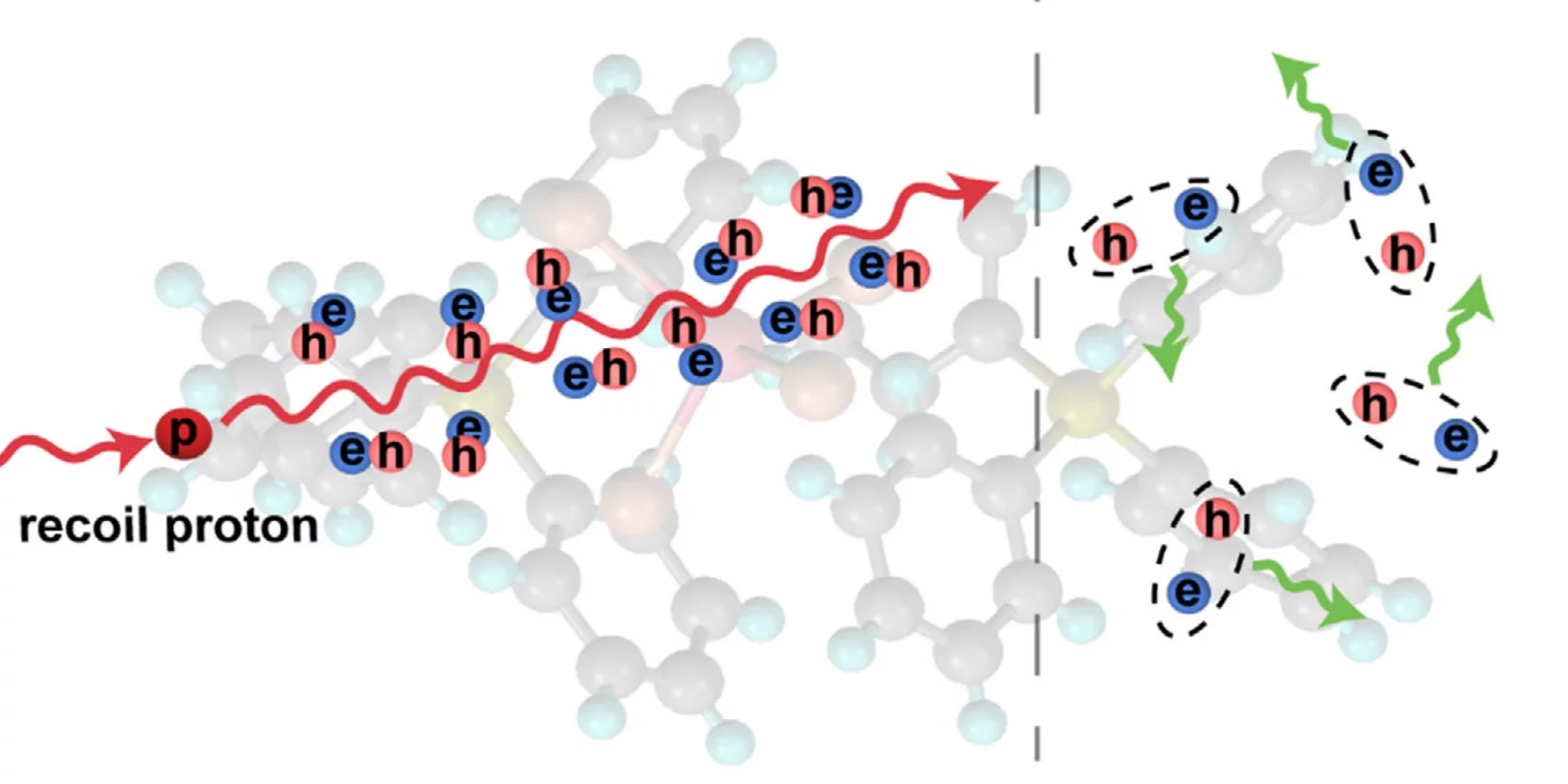Fast neutron imaging is a promising technique for visualizing objects containing dense, mixed light-and-heavy-elements materials, such as combustion engines, nuclear fuel assemblies, and fossils, where X-rays and thermal neutrons are ineffectiv. However, the limited efficiency of current detection technologies hinders their widespread adoption. Recoil proton detection using two-component scintillator screens composed of doped zinc sulfide (ZnS) microparticles in polypropylene (PP) remains the standard imaging tool due to the highlight yield of ZnS. The efficiency is, however, restricted by the low volumetric fraction of ZnS, which cannot be increased without causing excessive light scattering and loss of resolution, while PP is still neededfor substantial interaction with neutrons.
In this work, a monocompound metal halide tetraphenylphosphonium manganese bromide (TPP2MnBr4) scintillator is explored as an alternative, exhibiting 1.5 times higher light output and fourfold higher light yield than conventional ZnS-based scintillators. This improvement arises from superior recoil proton energy utilization in the homogeneous structure of TPP2MnBr4 compared to the heterogeneous composition of PP/ZnS. Imaging tests show spatial resolution of around one line pair per millimeter, matching commercial PP/ZnS screens. These results indicate that TPP2MnBr4 scintillator can reduce exposure time and improve image quality, paving the way for efficient, high-resolution neutron imaging technologies.
Facility: SINQ
Reference: A. Bhardwaj et al, Advanced Functional Materials, e09757 (2025)
Read full article: here



